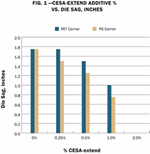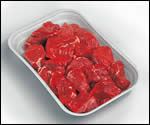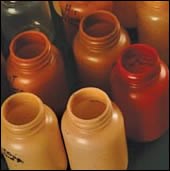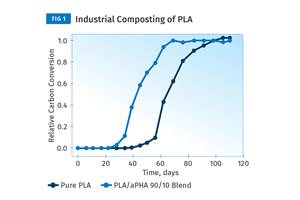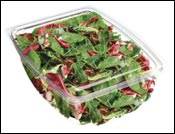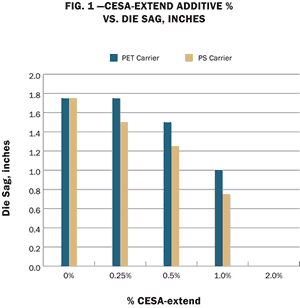Biopolymers Strive to Meet Price/Performance Challenge
High expectations for biopolymers— an emerging class of materials derived at least in part from biological activity—are being tempered by the realities of the marketplace.
High expectations for biopolymers— an emerging class of materials derived at least in part from biological activity—are being tempered by the realities of the marketplace. Development of new bio-materials and applications continues at a strong pace, but practical obstacles such as high prices, limited production capacity, and the lack of an infrastructure for effective composting—particularly in North America—hinder their growth.
Despite setbacks, new materials and modifying agents are expanding biopolymers’ reach, particularly in the case of polylactic acid (PLA). Efforts are focused on boosting mechanical and thermal properties so biopolymers can be effective alternatives to less costly commodity materials. Among the new developments discussed at Plastics Technology’s recent Bioplastics Processing Conference in Charlotte, N.C., are PLA foam grades for thermoformed meat trays, new additives for greater strength and reduced degradation, and fiber-reinforced materials that will expand biopolymers’ reach into blow molded bottles.
Tough economics
Slower-than-expected acceptance of biopolymers seemingly contradicts the burgeoning interest from both consumers and manufacturers in renewable resources, sustainable packaging, and reduced dependence on fossil fuels. Market analysts assumed that production and public acceptance of biopolymers would increase and prices would fall to a level competitive with petrochemical-based polymers. But that hasn’t happened, even in Europe, where growth is the strongest, says BCC Research, Wellesley, Mass. In the U.S., PLA prices have fallen, but are still in the range of 90¢ to $1/lb—not yet competitive with commodity thermoplastics. In addition, BCC says that greater U.S. acceptance of biopolymers hinges on development of a composting infrastructure and increased landfill costs to encourage composting.
Limited production capacity for today’s best-known biopolymer, PLA, is also a looming concern. The main domestic producer, NatureWorks LLC, said that its 300-million-lb/yr plant in Blair, Neb., is sold out. Still, the number of researchers, packagers, and processors working with PLA has climbed dramatically the last two years, and applications are multiplying, says NatureWorks senior application engineer Jim Nangeroni.
Europe is the largest market for biopolymers, with 60% of total production centered there, according to BCC. Average global growth is 12.6%/yr, and the overall market is expected to grow from 114 million lb in 2005 to 206 million lb by 2010, BCC says. Most of that usage will still be in two applications: compost bags and loose-fill packaging.
New PLA foam
Considerable activity is focused on PLA because of its early commercial success and adoption by retailers like Wal-Mart. Much of current R&D seeks to boost PLA’s performance profile and match its properties to commodities such as polystyrene. “We can achieve the same foam density and we’re close to matching PS on strength,” claims Nangeroni. At the conference, NatureWorks announced plans to introduce two new foam grades. It is also working with two processors to develop the first thermoformed trays of PLA foam in North America. Foamed containers would expand PLA’s penetration in rigid packaging beyond clear, thermoformed containers for fresh produce, baked goods, and deli foods.
A key ingredient in the low-density foam grades is a chain-extender additive called CESA-extend from Clariant Additive Masterbatches (see Learn More box). At 0.4% to 0.7% loadings, this masterbatch significantly raises PLA’s intrinsic viscosity (I.V.) and melt strength, which historically have been its Achilles’ heel in foam extrusion and in blow molding.
NatureWorks’ development partners are using the latest generation of patented Turbo-Screws technology from Plastic Engineering Associates. The secondary screws' unique design features cross-flight holes that reportedly increase cooling and foam output. The standard screws have been used primarily for PS foam sheet for clamshells and construction board. For PLA foam, the low-shear design reduces energy input and facilitates better mixing and heat transfer while using less energy, says Nangeroni. The first commercial foam application in North America is expected in the first half of this year.
Thermoformed PLA foam meat trays have already been introduced in Europe by Coopbox Europe SpA of Reggio Emilia, Italy, a leading producer of foam packaging for fresh foods. Its Naturalbox packaging, made of NatureWorks PLA, can be used in standard packaging lines with stretch films or sealed with PLA film for a 100% biodegradable solution, says Coopbox managing director Nicola Ballini.
Blow molding PLA
Recent development work conducted by the National Nutraceutical Center at Clemson Univ. demonstrates that natural fibers such as cotton can be blended with PLA to produce compounds for injection-blow molded bottles. Clemson worked with Plastic Technologies, Inc. to produce preforms of PLA and cotton fiber. The formulation also includes a small amount of herbs including turmeric, which reportedly boosts uv resistance 45% higher than that of PET. The bottles also boast low moisture and oxygen transmission. Lead researchers Dr. Danny Roberts and Dr. David Gangemi (director of the Center) are working under a grant to produce an “all-natural” bottle as a glass replacement for Gaia Herbs, Brevard, N.C.
Compounding has been performed on a two-roll mill to create an intimate melt blend of PLA and cotton fibers. The patented technology has been licensed to Gaia, and a prototype 6-oz bottle will be introduced at an upcoming nutraceuticals trade show, according to Roberts. Strong interest has come from bottle makers and end users in a range of markets, including automotive, construction, and cosmetics.
Examples of extrusion blow molded PLA bottles were also on display at the conference. Custom blow molder N.E.W. Plastics Corp., Luxemburg, Wis., showed off 32- and 85-oz bottles of PLA with 4% CESA-extend. Project manager Louis Ledvina notes that clarity remains an issue, and tooling challenges need to be resolved.
More additives for PLA
More new additives are arriving to boost PLA’s processability and performance. Two new impact modifiers from Arkema reportedly double the toughness of PLA. Gardner impact is more than doubled for BioStrength 130 (translucent applications) and BioStrength 150 (opaque) at loadings as low as 2%. Meanwhile, BioStrength 700 doubles the melt strength of PLA at 4% loadings and is clear. BioStrength additives are not biodegradable.
A new biodegradable antioxidant for PLA comes from start-up firm Polnox Corp. The product is claimed to protect PLA from heat degradation better than competitive antioxidants. The new material, initially developed at the Univ. of Mass. at Lowell, reportedly also gives PLA three to four times better shelf life. It is expected to be commercialized later this year.
For more information on the Biopolymers Conference, contact co-sponsor Polymer Process Communications.
Related Content
Blend Amorphous PHA with PLA to Improve injection Molded Part Properties
Adding aPHA to PLA can boost a range of mechanical properties and expedite composting. Here are the details as well as processing guidelines for injection molding the blends.
Read MoreHonda Now Exploring UBQ’s Biobased Material Made from Unsorted Household Waste
UBQ is aiming to expand its reach for more sustainable automotive parts as well as non-automotive applications.
Read MoreNPE2024 Materials: Spotlight on Sustainability with Performance
Across the show, sustainability ruled in new materials technology, from polyolefins and engineering resins to biobased materials.
Read MoreHow to Optimize Injection Molding of PHA and PHA/PLA Blends
Here are processing guidelines aimed at both getting the PHA resin into the process without degrading it, and reducing residence time at melt temperatures.
Read MoreRead Next
Extruding Biopolymers: Packaging Reaps Cost Benefit of Going 'Green'
Plastics made from renewable carbon chains, not fossil carbon from oil or gas, are suddenly a solid commercial reality. The draw isn’t just “green” marketing, but the “green” of stable prices not linked to petrochemicals.
Read More'As Good as New' Chain Extender Restores Reclaimed Resins
A new additive can re-link polymer chains in reclaimed PET, nylon, and polycarbonate to revive degraded properties.
Read MoreSee Recyclers Close the Loop on Trade Show Production Scrap at NPE2024
A collaboration between show organizer PLASTICS, recycler CPR and size reduction experts WEIMA and Conair recovered and recycled all production scrap at NPE2024.
Read More

